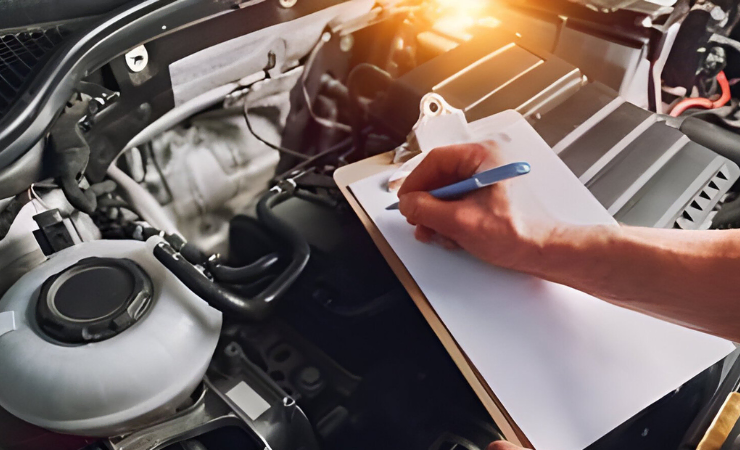The annual MOT test is a mandatory roadworthiness examination in the UK for vehicles over 3 years old. Performing pre-MOT checks and following a checklist helps identify issues to address before the test. Fixing problems early allows vehicles to pass this annual safety check on the first try.
This article outlines why pre-test preparation is important and provides a checklist of key vehicle components to proactively inspect. Thorough exams demonstrate responsible ownership, prevent wasted retesting, and uphold vehicle safety through regulatory compliance.
Importance of Pre-MOT Vehicle Inspection
- Proactive preventative measures identify issues needing repair pre-MOT
- Resolving problems early prevents repeat test fees if failure occurs
- Thorough inspection displays a commitment to safe, roadworthy operation
- Checking common test failure items reduces the chances of not passing

Pre-MOT Checklist: Key Components to Examine
Seat Belts and Horn
- Verify seat belt functionality – clean extension/retraction
- Inspect belt webbing for frays, cuts, or damage
- Check horn loudness and clarity
Exhaust and Emissions
- Visually inspect exhaust for leaks, corrosion, and loose components
- Listen for odd noises during acceleration
- Ensure the check engine light is not illuminated
Tires and Wheels
- Tires have adequate tread depth – at least 1.6 mm
- Look for damaged cuts, bulges, and punctures
- Proper inflation as stated in the owner’s manual
- Wheels securely fitted, no cracks or distortion
Lights and Signals
| Component | Inspection Points |
| Headlights | – Functionality – Beam Alignment – Lens Condition |
| Brake Lights | – Illumination when pedal pressed |
| Turn Signals | – Functionality – Flashing Rate |
| Reverse Lights | – Illumination when in reverse |
| Rear Plate Light | – Visibility |
| Front Parking Lights | – Functionality |
| Fog Lights | – Functionality – Light Color |
Brakes and Steering
- Firm brake pedal – no sponginess or loss of pressure
- The vehicle tracks straight when braking
- The steering wheel has no looseness or strange noises
- Check brake fluid level – between min/max lines
Windshield, Wipers and Mirrors
- Inspect the windshield, especially the driver’s view area
- Test operation of wipers and washer jets
- Ensure washer reservoir fluid is adequately filled
- Confirm mirrors are secure and free of cracks
Other Pre-MOT Preparation Tips
- Top up fluid levels – oil, coolant, washer fluid
- Clear vehicle interior and boot of unneeded items
- Review history for model-specific MOT failure trends to avoid them
- Seek qualified mechanic for uncertain faults
Invest time performing comprehensive pre-MOT checks by methodically following the provided checklist for critical inspection points prone to failure. Identify issues early to enable proactive servicing, saving on retest fees while demonstrating responsible vehicle ownership. Consistent preventative car maintenance aligned with MOT requirements upholds road safety through regulatory compliance.
